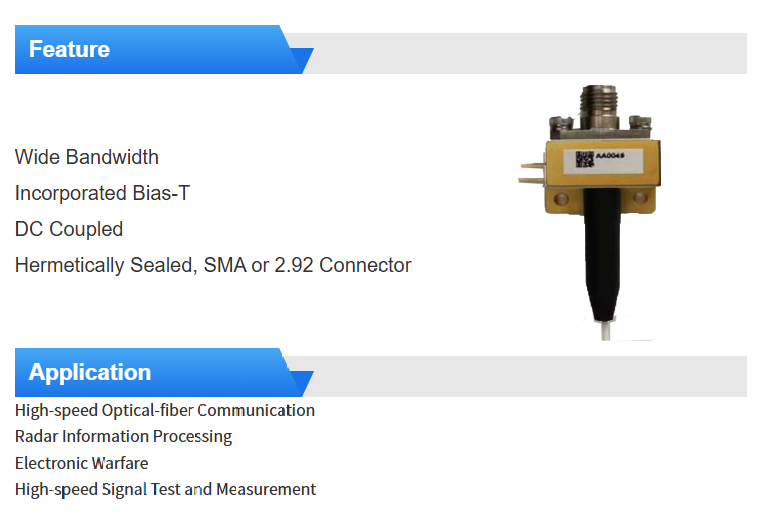Research Progress of InGaAs photodetector
With the exponential growth of communication data transmission volume, optical interconnection technology has replaced traditional electrical interconnection technology and has become the mainstream technology for medium and long-distance low-loss high-speed transmission. As the core component of the optical receiving end, the photodetector has increasingly higher requirements for its high-speed performance. Among them, the waveguide coupled photodetector is small in size, high in bandwidth, and easy to be integrated on-chip with other optoelectronic devices, which is the research focus of high-speed photodetection. and are the most representative photodetectors in the near-infrared communication band.
InGaAs is one of the ideal materials for achieving high-speed and high-response photodetectors. Firstly, InGaAs is a direct bandgap semiconductor material, and its bandgap width can be regulated by the ratio between In and Ga, enabling the detection of optical signals of different wavelengths. Among them, In0.53Ga0.47As is perfectly matched with the InP substrate lattice and has a very high light absorption coefficient in the optical communication band. It is the most widely used in the preparation of photodetector and also has the most outstanding dark current and responsivity performance. Secondly, both InGaAs and InP materials have relatively high electron drift velocities, with their saturated electron drift velocities both approximately being 1×107cm/s. Meanwhile, under specific electric fields, InGaAs and InP materials exhibit electron velocity overshoot effects, with their overshoot velocities reaching 4×107cm/s and 6×107cm/s respectively. It is conducive to achieving a higher crossing bandwidth. At present, InGaAs photodetectors are the most mainstream photodetectors for optical communication. Smaller-sized, back-incident, and high-bandwidth surface incident detectors have also been developed, mainly used in applications such as high speed and high saturation.
However, due to the limitations of their coupling methods, surface incident detectors are difficult to integrate with other optoelectronic devices. Therefore, with the increasing demand for optoelectronic integration, waveguide coupled InGaAs photodetectors with excellent performance and suitable for integration have gradually become the focus of research. Among them, commercial InGaAs photodetector modules of 70GHz and 110GHz almost all adopt waveguide coupling structures. According to the difference in substrate materials, waveguide coupled InGaAs photodetectors can mainly be classified into two types: INP-based and Si-based. The material epitaxial on InP substrates has high quality and is more suitable for the fabrication of high-performance devices. However, for III-V group materials grown or bonded on Si substrates, due to various mismatches between InGaAs materials and Si substrates, the material or interface quality is relatively poor, and there is still considerable room for improvement in the performance of the devices.
The device uses InGaAsP instead of InP as the depletion region material. Although it reduces the saturation drift velocity of electrons to a certain extent, it improves the coupling of incident light from the waveguide to the absorption region. At the same time, the InGaAsP N-type contact layer is removed, and a small gap is formed on each side of the P-type surface, effectively enhancing the constraint on the light field. It is conducive to the device achieving a higher responsivity.

Post time: Jul-28-2025





